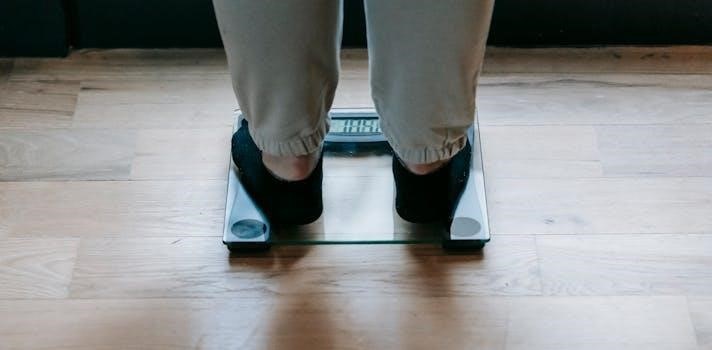Reebok Women’s Size Guide⁚ An Overview
Navigating the world of shoe sizes can be tricky, but this guide simplifies finding your perfect fit in Reebok women’s footwear. We’ll explore the key measurements, size conversions across different systems, and provide a detailed chart for accurate sizing. Understanding Reebok’s unique sizing will ensure comfort and performance.
Understanding Reebok’s Women’s Shoe Sizing
Reebok’s women’s shoe sizing system, while generally consistent, requires a nuanced understanding for the perfect fit. It’s essential to move beyond simply knowing your usual size. The brand uses a combination of US, UK, and European (EU) sizing standards, often alongside centimeter (cm) measurements, which can be more precise. These measurements are based on the length of your foot, from heel to the longest toe. Reebok’s sizing charts provide a detailed breakdown of these conversions, helping you find the corresponding size for your specific foot length. Keep in mind that shoe style can also influence fit, as some designs may be narrower or wider than others. It is advisable to consider the type of activity you’ll be engaging in, as this might influence your preference for a snug or slightly looser fit. Additionally, foot shape, including arch height and width, also plays a role in how a shoe feels. Comparing your foot’s measurement to the Reebok size chart is an important step to ensure optimal comfort and performance. This is especially true when transitioning from other brands which may have small differences in their sizing conventions.
Key Measurement⁚ Heel-to-Toe

The foundation for accurately determining your Reebok women’s shoe size lies in the heel-to-toe measurement. This measurement, taken in either centimeters or inches, represents the length of your foot from the back of your heel to the tip of your longest toe. It’s crucial to measure both feet, as they may differ slightly, and use the measurement of the larger foot. For the most precise result, place your heel against a wall and mark the position of your longest toe on a piece of paper. Then, measure the distance between the wall and the mark. This measurement is the key to finding your corresponding size on Reebok’s size charts. It’s important to take this measurement while wearing the type of socks you typically wear with sneakers. This will help ensure that the fit is comfortable and not too tight. Using a ruler or measuring tape will provide the most accurate measurement, eliminating any guesswork and allowing you to confidently select the correct size. This heel-to-toe measurement will serve as the base for comparisons to the different size systems used by Reebok, including US, UK and EU standards. This ensures a proper and comfortable fit in your Reebok footwear.

US, UK, and EU Size Conversions
Reebok, like many global brands, uses multiple sizing systems to cater to customers worldwide. Understanding the conversions between US, UK, and EU sizes is crucial when purchasing Reebok women’s footwear, especially if you’re used to a specific system. The US system is commonly used in North America, while the UK system is prevalent in the United Kingdom, and the EU system is utilized across Europe. These systems don’t directly correspond with one another, so knowing the conversions is essential to avoid selecting the wrong size. For example, a US size 7 may not be the same as a UK size 7 or an EU size 38. Reebok provides detailed charts that outline these conversions, often using centimeters as the base for comparison. These charts show how a specific foot length in centimeters translates into each of these three size systems. You can find these charts on their official website or in many online retailers that sell Reebok products. Always refer to the official Reebok size charts to ensure accuracy, as there can be slight variations in sizing between different brands. Using these conversion charts alongside your accurate heel-to-toe measurement is crucial for a comfortable fit.

Reebok Women’s Size Chart⁚ Detailed Breakdown
A detailed Reebok women’s size chart is essential for making informed purchasing decisions. This chart typically includes US, UK, and EU shoe sizes alongside their corresponding foot lengths in both centimeters and inches. The chart starts with the smallest sizes, like US size 5, and goes up to larger sizes. Each size listed is linked to specific foot measurements, allowing you to compare your foot length to determine your optimal Reebok size. For example, a US size 6 might correspond to a foot length of 23 cm or approximately 9.05 inches. The chart is arranged in a clear and easy-to-read format, often presented in a table. This format lets you quickly find your size by either knowing your foot length or a size you usually wear in another brand. These charts are usually available on Reebok’s official website, retailers selling their products, or in-store. The chart is designed to be comprehensive, providing a breakdown of the size differences, to help you avoid errors in selecting the wrong size. Always check the specific chart provided by Reebok when making a purchase, as some slight variations may occur. Using this chart alongside your heel-to-toe measurement will ensure a good fit for your Reebok shoes.

Centimeters and Inches in Reebok Sizing
Reebok’s sizing system utilizes both centimeters (cm) and inches to ensure accurate measurements. This dual approach caters to different preferences and measurement systems worldwide. Centimeters are commonly used in Europe and many other countries, while inches are prevalent in the United States. When looking at a Reebok size chart, you’ll find that each shoe size is associated with a specific foot length in both cm and inches. For instance, a women’s US size 6 might correspond to 23 cm or 9.05 inches. These measurements reflect the heel-to-toe length of the foot that fits comfortably within that particular shoe size. Using both cm and inches makes it easier for shoppers to choose their perfect size, regardless of their usual measurement system. This precision is particularly important for athletic footwear, where a correct fit is crucial for performance and comfort; Reebok provides these measurements to reduce the chances of getting the wrong size, which enhances the overall shopping experience. Therefore, it’s beneficial to measure your foot in both units to be sure of the best fit when buying Reebok shoes. The dual system ensures that customers are provided with all the information they need for accurate sizing.
Reebok vs Other Brands Sizing Comparison
While many brands try to adhere to a general sizing standard, slight variations exist, and Reebok is no exception. Comparing Reebok’s sizing with other popular brands like Adidas and Nike reveals some key differences that shoppers should be aware of. Generally, Adidas might have a slightly larger fit in some models compared to Reebok, especially in their running shoes. Nike, on the other hand, often has a more narrow fit and can sometimes run a half size smaller than Reebok; These differences are subtle but can significantly impact your comfort and shoe performance. It’s always a good idea to refer to the specific size charts of each brand, rather than assuming sizes are interchangeable. For example, if you typically wear a size 7 in Nike, you might find a size 7 in Reebok fits slightly differently. Some users also report that Reebok’s sizing might be more consistent across different styles than other brands. Consulting online size guides and customer reviews can provide valuable insights when transitioning between different brands. Remember that these are general observations; individual shoe models may still vary. Always consider your foot’s width and shape, and when possible, try on shoes from different brands to determine the best fit.
Differences between Men’s and Women’s Reebok Sizes
It’s crucial to understand that men’s and women’s Reebok sizes are not directly interchangeable. While both use numerical sizing, the underlying foot shapes and dimensions they are designed for differ significantly. Women’s shoes are typically constructed with a narrower heel and a wider forefoot compared to men’s shoes. This difference in last (the foot-shaped form around which shoes are built) affects how the shoe fits and feels. Men’s sizes, on the other hand, are generally wider throughout and often have a larger volume. A woman wearing a men’s size will likely find the shoe to be too wide and lacking support in the arch and heel area. Conversely, a man trying to wear a women’s size will likely find it too narrow and constricting. The difference in sizing is not simply a matter of one or two sizes; it’s about the overall shape and construction of the shoe being tailored to a specific gender’s foot characteristics. Therefore, always refer to the appropriate gender-specific Reebok size chart. Ignoring these differences can lead to discomfort, reduced performance, and even foot problems. Always double-check the label to ensure you are looking at the correct size chart when shopping for Reebok shoes.
Where to Find Reebok Size Charts
Locating accurate Reebok size charts is essential for ensuring a proper fit when purchasing their footwear or apparel. The primary place to find these charts is on the official Reebok website. Typically, you’ll discover a dedicated size guide section within the product pages themselves, or often accessible through a link in the footer or header of the site. These charts are frequently updated to reflect any changes in sizing standards. Beyond the official site, reputable online retailers that carry Reebok products, such as Kohl’s, often provide their own versions of the size charts. However, it’s always best to cross-reference these with the official Reebok chart to be certain. You might also find size charts in physical stores, either on posters or provided by sales associates. Additionally, some athletic gear review websites and blogs might include size charts in their content, but verify their reliability before relying on them. Remember, the most accurate and trustworthy source will always be the official Reebok website, as they maintain their standards. Always be careful when using third party charts, cross-reference and compare whenever possible.
Specific Reebok Shoe Models and Sizing
While Reebok provides general size charts, it’s important to note that sizing can sometimes vary slightly between different shoe models. For instance, some running shoes might have a snugger fit compared to lifestyle sneakers. Similarly, certain models with added cushioning or unique designs may require you to go up or down a half size for the most comfortable fit. If you’re purchasing a specific style, such as the Classic Leather, Nano, or Club C, it is beneficial to check reviews. Many customers offer feedback on whether the particular model runs true to size, or if they experienced any sizing discrepancies. It is also worth noting that shoes designed for specific activities, such as training or basketball, may also have subtle differences in fit compared to everyday wear options. Always take the time to verify the information available on the product page itself, where you may find recommendations tailored to that specific model. If possible, try the shoes on in-store to determine the best size for you. This allows for a personalized assessment that is always the most accurate method.
Reebok Apparel Size Guide⁚ Bottoms
When it comes to Reebok women’s bottoms, finding the right fit is crucial for both comfort and performance. Reebok’s sizing for bottoms, such as leggings, shorts, and pants, generally follows standard sizing conventions, but it’s always best to consult their specific size chart. To determine your size accurately, you will need to measure your waist and hips. For waist measurements, measure around the narrowest part of your natural waistline. For hips, measure around the fullest part of your hips while keeping the measuring tape parallel to the floor. After you’ve acquired those measurements, compare them to the provided size chart. Note that sizes may vary slightly across different styles, so it’s wise to check the size guide associated with the specific item you are interested in. Some designs might have a more relaxed fit, while others might be more form-fitting. Pay special attention to descriptions that mention features such as high-waisted, or compression fit, as these can impact how a garment feels and fits on your body. When in doubt, opt for the larger size if you are between sizes for comfort.
Importance of Accurate Sizing for Comfort and Performance
Accurate sizing is paramount when selecting Reebok women’s athletic wear because it directly impacts both comfort and performance. A poorly fitting shoe can lead to blisters, discomfort, and potential injuries, hindering your workout. When shoes are too tight, they can restrict blood flow and cause pain, while shoes that are too loose can cause slipping, leading to instability and loss of efficiency. Similarly, with apparel, incorrect sizing can restrict movements, causing chafing, and impeding your ability to perform at your best. Clothing that is too tight can limit your range of motion, making workouts uncomfortable and ineffective. On the other hand, clothing that is too loose can be distracting and cumbersome, interfering with your activity. When your clothing and footwear fit properly, you can focus on your workout without being distracted by ill-fitting gear. This focus allows you to maximize your performance, optimize your training, and achieve your fitness goals. Investing time in ensuring the correct size guarantees comfort, reduces the risk of injury, and enhances your overall workout experience.
